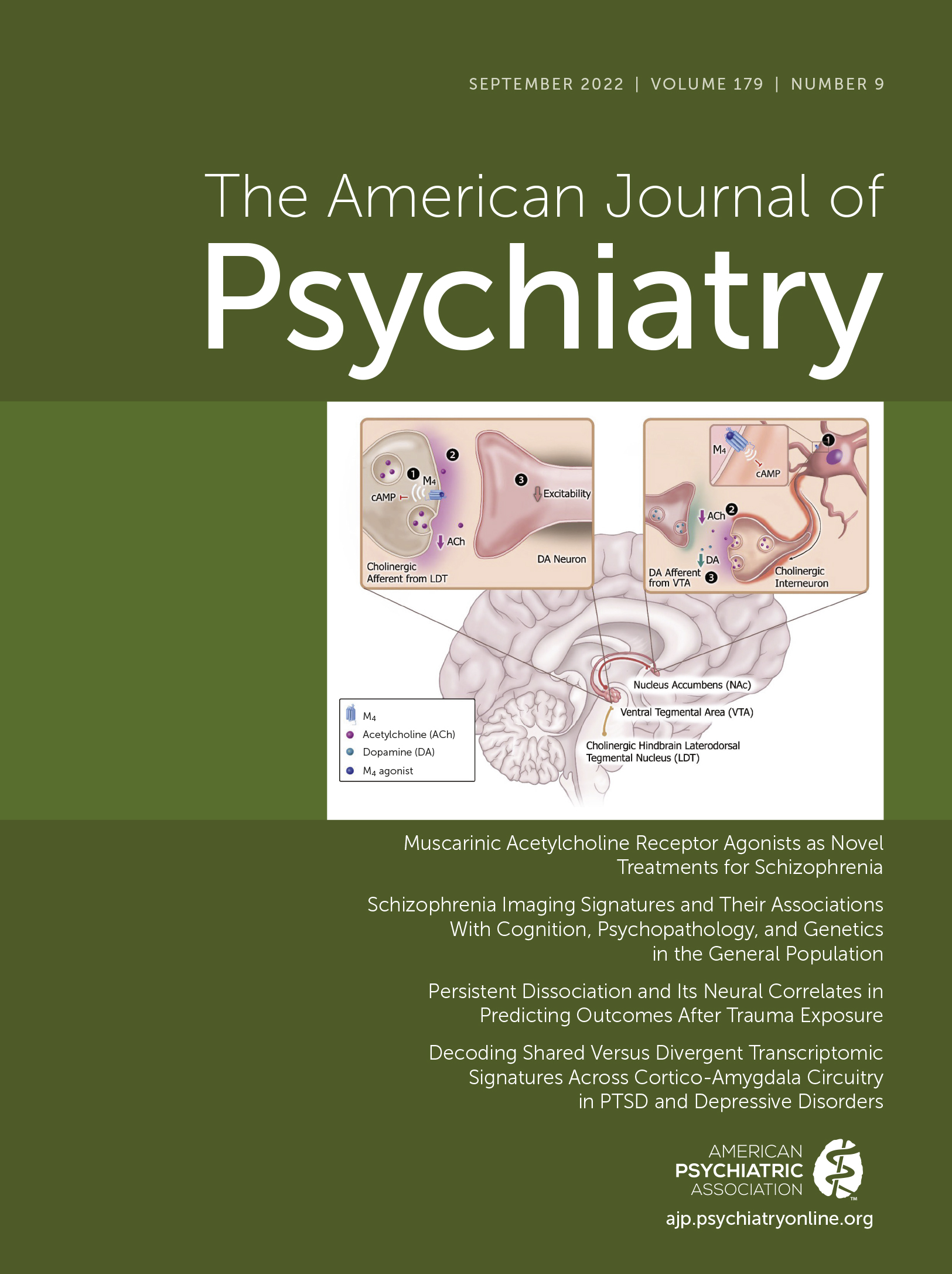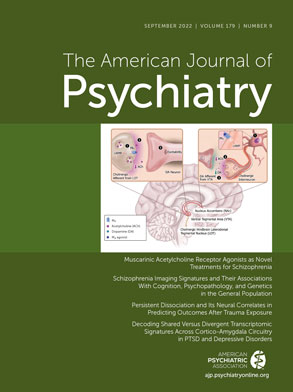PTSD and depression are highly comorbid, and Jaffe and colleagues (
10) use RNA sequencing data from postmortem brains to understand alterations in gene expression that are associated with these illnesses and also shared by them. Measuring RNA is of value because RNA levels reflect an interaction between heritable genetic structural variation and environmentally mediated epigenetic effects, and, via translation and mRNA, direct protein formation. The postmortem brains that were used in this study included those from control subjects (N=109), major depression without comorbid PTSD (N=109), and PTSD with some individuals with comorbid depression, bipolar disorder, or substance use disorder (N=107; 62.6% with comorbid major depression; 27% with comorbid bipolar disorder; 77.6% with comorbid substance use disorder). Because of data linking alterations in prefrontal/frontal-amygdala circuitry to depression and other stress-related psychopathology, RNA sequencing was performed from tissue dissected from two cortical regions (dorsolateral PFC and midcingulate cortex) and two amygdala regions (basolateral region and medial amygdala nucleus). When combining the cortical regions, the investigators found 41 genes that were differentially expressed when PTSD and control subjects were compared. Among the differentially expressed genes,
CORT expression was decreased. This is of interest because
CORT encodes for precorticostatin, a protein that is processed to corticostatin-17, which is found in inhibitory GABA cortical neurons. Furthermore, the structure of corticostatin is very similar to that of somatostatin, and also binds to somatostatin receptors. When combining the RNA data from the amygdala regions and using multiple comparison corrections, only one differentially expressed gene was detected (i.e., reduced expression of
CRHBP). This is of interest since
CRHBP encodes for the corticotropin-releasing hormone binding protein, which functions to modulate the synaptic availability of the anxiogenic neuropeptide, corticotropin-releasing hormone. Additional differential analyses were performed for the two cortical and two amygdala subregions, and findings revealed that the most prominent cortical effects were detectable in the midcingulate cortex. When controlling for other potentially important variables, such as the use of antidepressants and the presence of opioids in the blood, the overall findings were generally conserved, suggesting that the detected effects are specific to PTSD and not due to comorbid depression or substance abuse. Other analyses revealed that the differentially expressed genes were found to be in pathways related to immune function, microglia, and GABA-inhibitory neurons. In relation to major depression, when combining the RNA data from the two cortical and two amygdala regions, the researchers found 182 genes in the cortex and none in the amygdala that were differentially expressed when compared with control subjects. Further analyses of the amygdala data revealed 16 genes that were differentially expressed in the medial amygdala nucleus and none in the basolateral region. Overall, when using liberal significance criteria, there was a considerable amount of overlap in the genes that were differentially expressed between PTSD and major depression. Consistent with this, only a few genes were found to be differentially expressed when comparing PTSD to major depression. Taken together, this study suggests shared and distinct alterations in gene expression patterns in PTSD and major depression, highlighting pathways involving immune-related alterations, GABA-inhibitory neurons, and the corticotropin-releasing hormone binding protein. In their editorial, Drs. Sarah Rudzinskas and David Goldman from NIMH (
11) discuss the importance of the findings and also discuss issues relevant to interpreting transcriptomic studies from postmortem brain tissue.

